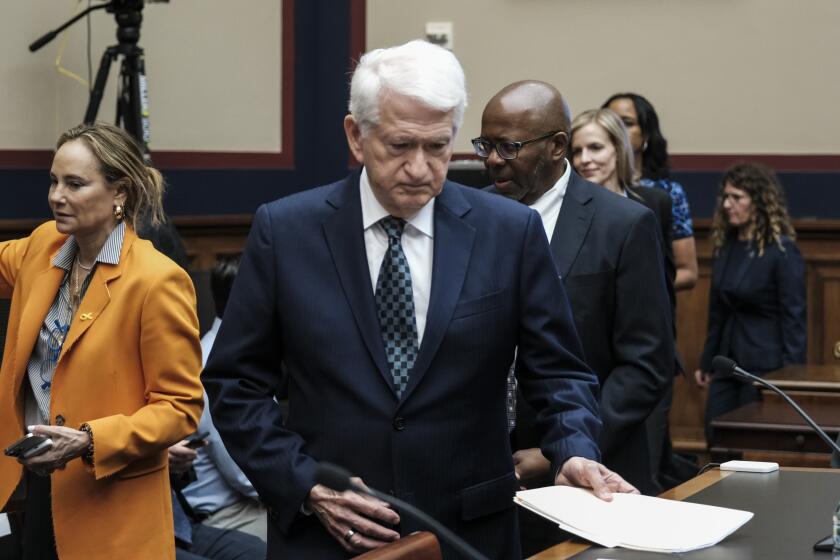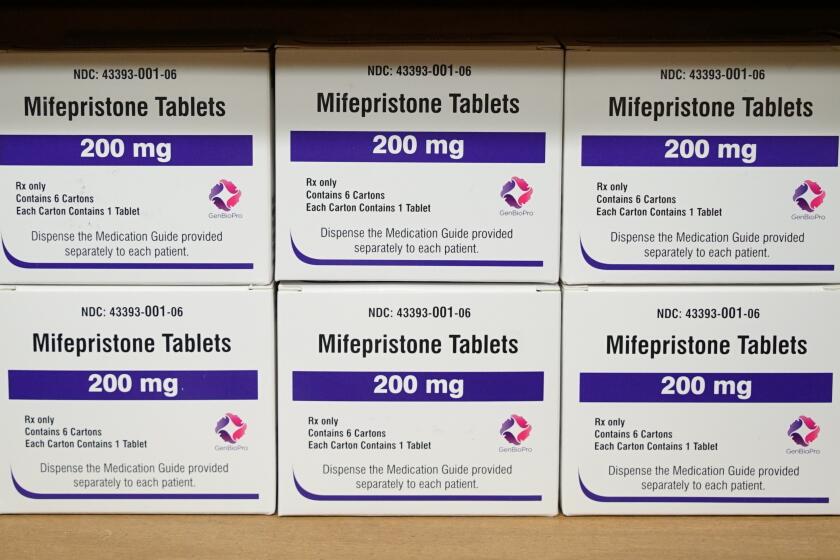Police Fitness Plan Put to the Test : Downey Chief Hopes Incentive to Exercise Will Pay Off
When Police Chief William Martin instituted a new fitness program that rewarded officers with as many as 10 days off a year, his idea was to reduce absenteeism and eventually entice every officer in the 107-member force into peak physical condition.
After more than two years of the program, results are mixed. Only 14 officers qualify as being in good or excellent shape. And sickness-related absenteeism actually jumped in 1985--the first full year of the program--although it dropped last year, according to police records.
Martin said he remains committed to the program. “Watching the morale of our people and noticing these sick changes (in 1986), I’m convinced it’s really good,” he said. With exercise, people “feel better. They look better and they’re happier employees.”
He said other benefits--including increased longevity of his officers--will surface in time, and he and program participants remain enthusiastic.
Martin instituted the program in May, 1984, to reduce the cholesterol levels and bulging midriffs of some of his officers, and to develop a healthier force with more strength, stamina and flexibility.
‘Getting Fat’ on Doughnuts
“A guy goes to prison and doesn’t have anything to do and works out,” Martin explained. “We were getting fat on Winchell’s doughnuts and that doesn’t work.”
The Downey program is modeled after the fitness regime of Dr. Kenneth Cooper, who runs the Aerobics Center in Dallas and authored “The Aerobics Way,” a pioneering text in the field.
Martin went to Dallas in 1984, where he learned to test the body for cardiovascular endurance, fat content, flexibility and strength, and to prescribe a diet and exercise routine. About 15 officers have since been trained as instructors.
Tucked away in a back room of the Downey police station is a collection of electronic and mechanical gadgetry, and enough good, old-fashioned iron to make Arnold Schwarzenegger smile.
The department spent about $16,500 outfitting the training room, which includes free weights, weight machines, a motorized treadmill and a computerized rowing machine. Most of the money for the equipment came from training funds the state gives to the department, and the Downey Police Officers Assn. contributed about $5,000, Martin said.
Six Fitness Categories
Under the program, an officer’s condition is judged by measures in six areas: sit-ups, leg press, bench press, running, stretching and body fat.
To qualify in excellent condition, for example, a male officer who is 20 to 29 years old and weighs between 150 and 174 pounds must be able to perform at least 51 sit-ups in a minute and run 1.5 miles in less than 10 minutes, 45 seconds.
The officer must be able to bench press at least 222 pounds and leg press at least 357 pounds, be able to reach at least nine inches past his toes while sitting with straight legs and have body fat of less than 9.7% of his weight.
The standards vary for female officers, and depend on age and weight.
As an incentive to get into shape, an officer who scores excellent in all areas receives two “wellness days” off a quarter, while an officer in good shape receives one day per quarter.
‘Don’t Have to Be the Hulk’
“You don’t have to be the Hulk, but you have to be fairly strong,” said Lt. Dennis Chelstrom, a fitness instructor. “It’s an all-around type program.”
At the start of the program, Martin said, he wanted all of his officers to eventually test in good to excellent condition. He now said that may not have been a realistic goal.
During testing in December, eight officers qualified in excellent condition and six were in good condition.
“I’d like to see a lot more people” qualify in good or excellent condition, said Martin, who noted that some officers take advantage of the training facilities but don’t care to test. “It’s slow in coming, but it’s going to make it.”
From 30 to 50 officers use the training room and participate in a club the Police Department set up to encourage officers to run, walk, bicycle, swim and row, Chelstrom said.
Martin said he has personally benefited from the program, but his body fat and lack of flexibility have prevented him from qualifying in good condition. The chief said he weighed 246 pounds when the program started; he got down to 225 pounds before picking up five pounds during the holidays.
“My body fat is going to get there,” he said. “That’s what I’m working on.”
Areas of Weakness
Other officers have not qualified in good or excellent condition because of a weakness in one or two areas.
Officer Paul Koppes, 28, twice tested in good condition since coming to the Downey Police Department eight months ago. He scored excellent in every category except body fat, where he tested in good shape.
“One of these days I’ll lose a little extra weight and get two days off,” he said.
Injuries have prevented other officers from qualifying.
Motorcycle Officer Steve Guthrie, for example, is a fitness instructor but can’t qualify for days off because he injured his back in an accident and can’t meet the stretching requirement, Chelstrom said.
Officers earned about 75 wellness days off in 1986, Chelstrom said.
Meanwhile, sickness-related absenteeism has fluctuated since 1980. In 1984, officers took 6,427 hours of sick leave, compared to 7,684 hours in 1985 and 6,744 hours last year. The first full year of the fitness program was 1985.
The difference in sick leave hours between between 1985 and 1986--about 117 days--represents a savings of $15,799 at a police officer’s basic salary, Martin said.
Less Absenteeism
The police chief said he thinks the downward shift in absenteeism from 1985 is attributable to the fitness program.
“Statistically, I can’t prove it yet. I have to hope that’s what it is,” he said. “I’d like to believe we’re doing a better job of getting in shape.”
The program has its testimonials.
Lt. John Finch, 31, broke his shoulder, wrist and ankle and severed part of a tendon in his heel in a 1982 motorcycle accident. He still has problems with his shoulder and heel, but has rehabilitated himself through the program and now qualifies in excellent condition. Finch’s doctors told him he shouldn’t lift weights or stretch, which left him feeling weak and unfit, he said.
“If this fitness program hadn’t come around, I probably would . . . have listened to the doctors and done the conservative,” he said.
Koppes said he worked out regularly before, but the fitness program required him to work more on cardiovascular conditioning and the wellness days provided a little extra incentive.
The added conditioning helps on the job, he said.
“If you’re out in the field and have to deal with someone you have more confidence,” Koppes said. “You don’t have to resort to your stick or gun.”
More to Read
Start your day right
Sign up for Essential California for news, features and recommendations from the L.A. Times and beyond in your inbox six days a week.
You may occasionally receive promotional content from the Los Angeles Times.






